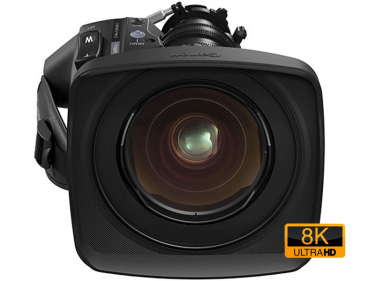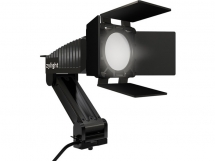| Українська | English | |||||||||||
|
|||||||||||
| News | About company | Service-centre | OB Van/SNG Rental | NextGen Energy Solutions | Contact us |
|
|
Engineering Service, Inc.
» News News While Canon’s principal focus at NAB 2019 will be on promoting and extending the capabilities of its 4K HDR broadcast lenses, there will be continued speculation and hints of actual news about its plans for the 8K live market. The company has been teasing an 8K broadcast product since 2015/16 when it debuted a prototype of a Super35 sensor camera body with 8K lens.
It’s since been testing the technology, along with a workflow that includes an 8K HDR display and signal over optical fibre network (both prototype) including at the Bledisloe Cup rugby union match between New Zealand and Australia at the Nissan Stadium in Yokohama City last autumn. “It’s a working proof of concept to show that we can do 8K and when the market is ready we’ll have an end to end chain we can bring to market,” says Stephen Hart Dyke, Professional Imaging/B2B product marketing manager, Canon Europe. Adds Blazej Klacansky, channel development manager, “We have an 8K sensor, we have 8K lenses and we make our own processing chips so image capture is not a problem. “We know 8K works. On that camera, we output raw 8K 60p via four 6G SDI outputs to four independent recorders. Of course, you don’t need raw. There are other output formats to manage the data better, but this [volume of data] is one challenge the industry needs to overcome.” Even Japan’s NHK is only transmitting limited programming in Super Hi-Vision. 2001: A Space Odyssey, with which it launched a channel last December, was rescanned to suit the format. Although it has already made an 8K lens for the 1.25-inch size of Sony’s UHC-8300’s sensor, Hart Dyke says this is purely a Japanese requirement. “There is literally no demand in EMEA for 8K broadcast production,” he adds. However, Canon is clearly intent on building out its own 8K broadcast and cine set and is tapping some of the U$3bn the firm has invested over the past year in R&D to make it happen. “We know image acquisition works, there are 8K consumer displays entering the market this year. and efficient codecs such as HEVC H.265 for transmission,” stresses Hart Dyke. “What’s more, the chain in between is changing rapidly.” One of these drivers will be 8K activity around the Tokyo Olympics in 18 months. Fan zones around stadia are being lined up as one application for 8K content. Canon itself has tested wide-angle video captured using an 8K camera and a fisheye lens at the Bledisloe Cup. The output was transmitted from the stadium, converted in real time for wide-angle projection using multiple 4K projectors and viewed live at Canon’s Tokyo HQ. Canon cooperated with partner companies to produce three-dimensional sound overlaid on the pictures and has plans to develop this technology for immersive sports viewing applications. However, developing an 8K lens for sports is technically more challenging than that for cinema. “In the cinema world you have more artistic expression and the lens can have various faults which lend the image distinct characteristics but for sports, you need a best in class image,” says Klacansky. Leaving aside trying to make an 8K 2/3 chip camera chain (which no manufacturer has cracked), one of the keys is to achieve a consistent resolution all the way around the frame, not just as its centre which is why all lenses outperform the nominal peak resolution of the sensor. “You naturally lose some of the light through the optics and in addition lenses are naturally spherical and will deliver a higher sharpness at the centre than at the edge,” says Klacansky. “On top of that, if you use an extender, of say 2x, you will also reduce the resolution nearly 2x.” Canon’s 4K premium range lenses, for example, exhibit a 6K or more resolution in their centre delivering at 6K in the centre and corners of the image; its lower end 4K range delivers 6K in the centre and 4K to the corners. “For 8K you would need a higher spec lens design in the centre of 12K, 14K even 16K depending on the category of the lens you require,” says Klacansky. “You will also need enhanced optical image stabilisation and to ensure that tolerances are minimal. You’d need different materials [than for building cine lenses] such as more fluorite, different coating and different polishing techniques to make it possible to grind such a large spherical lens. You can’t cheat physics.” « To the list of news |
|
|||||||||||||||||
 |
+38 (044) 593-18-20 +38 (073) 593-18-20 +38 (096) 532-96-82 +38 (095) 532-96-82 Service center Telegram @Engineer_Service |

|
|
|||||
 |
e-mail: engineer-service.tv 15 Vavylovykh str., Kiev, 04060, Ukraine Authorized service centre of Panasonic, Sony, JVC, Fujinon, Canon |
|||||||








